Hay Fever: Types, Causes, Symptoms, Diagnosis, and Treatments
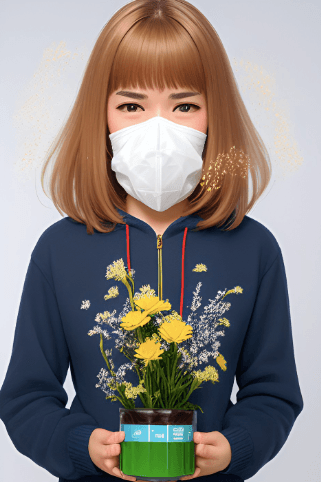
Related products
Learning more about Hay Fever
Hay fever, also known as allergic rhinitis, is an allergic reaction to certain substances and airborne particles such as dust mites or pollen, most commonly pollen, which causes inflammation of the mucous membranes in the nose. It is a common condition, affecting up to 30% of people in some countries.
Plants release pollen into the air as part of their reproductive cycle, and the wind or insects spread it. People with hay fever are allergic to other substances, too, such as dust mites or mold.
Hay Fever causes specific symptoms like sneezing, runny nose and itchy eyes, sore throat, coughing, and an itchy roof of the mouth or throat. It also manifests through fatigue, headaches, or low fever. Usually, the reaction time is quick (within minutes) if allergens are inhaled, resulting in nasal congestion called rhinorrhea and other symptoms described before. However, sometimes one could observe an onset of allergic reactions after a few hours too, leading to further complications depending on the severity of mucosal inflammation caused due to allergies present already in the body since long-term exposure leads to permanent swelling known as vasomotor irritation with added pain around the facial area including sinuses or ear itching; this phenomenon often observed when two different irritants combine exacerbating existing Hay Fever case even more.
The types of hay fever vary depending on the cause of allergy but usually include seasonal allergies triggered by tree and grass pollen in springtime, followed by weeds in the late summer; this type is often called Seasonal Allergic Rhinitis (SAR). There are other forms, too: Perennial allergic rhinitis which occurs when allergens remain present throughout the year, such as house dust mite droppings from pet dander, etc. Nonallergic rhinitis is sometimes experienced by irritants such as Persistent Organic Pollutants (POPs), pollutants released through cigarette smoke, etc., and some drugs used for hypertension treatment. Vasomotor rhinitis resulting from cold air exposure, humidity changes, or physical exercise; Hormonal factors where hormonal changes during pregnancy could lead to symptoms similar to hay fever sufferers' experience; Occupational factors if one's occupation involves allergen triggers.
Generally, diagnosis depends upon careful history taken from the patient highlighting recent changes made to the environment that are suspected to be causing such reactions, followed by a physical examination which helps us identify any signs related to allergy. Then finally, performed allergy tests provide conclusive information about allergen triggers causing hay fever, whether pollens, mites, molds, etc. If environmental changes aren't enough, medications prescribed to relieve these irritating sensations include antihistamines, decongestants, intranasal corticosteroids, eye drops, etc., tailored explicitly according to the individual's needs to avoid any.
The most common treatment is over-the-counter medications, such as antihistamines, decongestants, and nasal sprays. These help to relieve symptoms such as sneezing and an itchy or runny nose. Sometimes, a doctor prescribes a more vital medication, such as a steroid nasal spray. Immunotherapy, which involves gradually introducing an allergen to the body to build up tolerance, is also an option for some people. When managing hay fever, it is important to identify the substances causing the allergic reaction and to take steps to avoid them. Some measures include closing windows and doors when pollen counts are high and using air filters or air purifiers in the home. Wearing sunglasses and a hat outdoors helps to shield the eyes and face from pollen.
What is Hay Fever?
Hay fever, medically known as Allergy Rhinitis, is an allergic reaction to airborne particles such as dust mites or pollen. It causes various symptoms, including sneezing, runny nose, and itchy eyes. In more severe cases, nasal congestion called rhinorrhea is accompanied by fatigue, headaches, or low fevers. Most commonly affecting people from the springtime when tree and grass pollens are in the air, but other factors like mold spores or animal fur trigger it too, leading to perennial allergic rhinitis throughout the year's cycle rather than seasonal hay fever reactions alone, this type often caused persistent organic pollutants (POPs) present through areas where we live work, etc. Hormonal shifts during pregnancy could lead to similar responses not uncommonly observed either. Diagnosis requires careful history taken from the patient followed by allergy tests to confirm any specific allergen triggers prescribed medications used to relieve these irritations according to tailored basis needs to prevent exacerbating existing conditions while avoiding irrelevant treatments.
Is Hay Fever the same as Allergic Rhinitis?
Yes, hay fever and allergic rhinitis are the same conditions. Hay fever is an outdated term for seasonal (usually spring or summer) allergies caused by pollen in the air that aggravate the mucous membranes of our nose, eyes, and throat. Allergic rhinitis is a more general term that describes any allergy-related inflammation of these nasal passages, whether triggered by pollen or other substances like dust mites, animal hair/dander, etc. Both terms are used interchangeably as they're referring to essentially one medical condition - acute allergic reaction resulting from exposure to irritants in the environment. The primary symptoms for both conditions involve inflammation in the nose when exposed to irritants which lead to sneezing, congestion/runny nose frequently accompanied by itchy eyes and throat irritation. In some cases, respiratory difficulties occur, making breathing difficult until treatment has been administered or avoiding exposure entirely where possible.
How does Hay Fever develop in the body?
When a person with hay fever is exposed to allergens, the body's immune system will respond by producing specific antibodies called Immunoglobulin E (IgE). These antibodies then attach themselves to specialized cells in the nose called mast cells, causing them to release histamine and other pro-inflammatory chemicals, resulting in swelling, congestion, and itching. The reaction occurs relatively quickly once triggered, but it could take days or weeks for symptoms like sneezing or runny nose to appear due to IgE needing time to accumulate before reaching detectable levels. Even after allergen exposure has ceased, symptoms won't disappear immediately since it takes some time for these substances already released into nasal passages to dissipate completely.
The symptoms worsen if exposure continues or extra histamine is released into the bloodstream due to prolonged contact between irritant particles and epithelial cells within respiratory organs such as the lungs or nose. In some cases, other frustrating problems such as ear infections, post-nasal drip (mucus that accumulates in the throat), or even asthmatic reactions occur depending on individual sensitivities towards allergies in the surrounding environment.
Are there any Genetic Factors that contribute to the development of Hay Fever?
Yes, genetic factors increase the risk of developing hay fever. Studies have found a connection between specific gene variations and atopic diseases such as allergic rhinitis (hay fever), eczema, and asthma, suggesting that genetics plays an important role in their onset. It is thought that these variations alter certain immune system processes increasing susceptibility to environmental allergens plus other triggers for various types of allergies, including seasonal ones like hay fever. Ultimately this indicates family history is used to evaluate potential risks involving individuals based on evidence from close relatives who suffer from related conditions that require additional testing before a diagnosis is confirmed or ruled out entirely.
Gene variants involved with allergic rhinitis (hay fever) affect numerous aspects of immunity. For instance, some have been linked to decreased IgE response when exposed to certain allergens, which may or may not cause symptoms depending on the severity and other factors of an individual's unique physiology. Additionally, genetic changes located within pathways responsible for regulating inflammation levels throughout the body influence how quickly the immune system responds, causing localized reactions even if exposure has occurred days before the diagnosis made due to delayed symptom onset at times. Lastly though many still unknown exact molecular mechanisms implicated, studies point towards slightly altered patterns found amongst individuals predisposed to developing hay fever potentially affected by one more hereditary trait currently being identified. Further research progressions have been made in the area.
What are the different types of Hay Fever?
Hay Fever is a seasonal allergy reaction to environmental substances such as pollen, dust mites, and/or mold spores. There are two main types of hay fever depending on what triggers the allergic response:
Seasonal Allergic Rhinitis
Seasonal Allergic Rhinitis, commonly known as Hay Fever, is a common condition caused by an allergic reaction to airborne substances such as pollen and mold spores in the environment. It typically occurs during certain times of the year when allergens are most prevalent - generally spring and summer months due to increased exposure to pollen or autumn/ winter months due to damp conditions favoring the growth of molds. Symptoms include sneezing attacks, itchy eyes, nasal congestion, and facial pressure, which last for days or weeks; asthma symptoms, including wheezing and difficulty breathing normally, arise from irritation further down the respiratory system. In addition, many sufferers experience other body aches like headaches that won't go away & fatigue resulting from poor quality sleep because they can't breathe properly throughout the night - making diagnosis difficult without professional medical assistance.
To manage Seasonal Allergic Rhinitis effectively, identifying trigger allergens (pollen particles /mold spores ) necessary, so an appropriate treatment plan is put together using anti-allergy medications along with lifestyle changes such as avoidance of grass cutting outdoors where possible, adopting 'green' housekeeping strategies avoiding use harsh cleaning products, etc.
For mild cases, relief usually comes fairly quickly; however, long-term since hay fever tends to come back each season, getting checked out by a doctor is important to make sure the right medication prescribed gains maximum benefit. In conclusion, Hay Fever has a wide range of different symptoms depending on the presence of allergen exposure making it difficult to identify the source problem without professional medical help - but thankfully, there are ways to manage the disease if diagnosed correctly and followed up with appropriate treatment plans.
Perennial Allergic Rhinitis
Perennial Allergic Rhinitis (PAR) is an allergic condition caused by exposure to environmental allergens, such as dust mites, pets, and mold spores, which trigger the body's immune system all year round. Symptoms include sneezing attacks, itchy eyes, nasal congestion, or facial pressure with associated exhaustion & fatigue due to lack of quality sleep. Where there is difficulty breathing properly throughout the night - making diagnosis difficult without professional medical assistance, in severe cases, PAR leads to asthma-like symptoms, including wheezing or difficulty in breathing normally.
To manage Perennial Allergic Rhinitis effectively, identification of source problems is important, so an appropriate treatment plan be put together using anti-allergy medications - often alongside lifestyle changes such as avoiding walking on grass outdoors, adopting 'green' housekeeping strategies avoiding harsh cleaning products, etc. Oral tablets, nasal sprays, and eye drops are some common treatments prescribed for relief but bear in mind that while mild allergies usually respond quickly, more chronic issues will tend to require regular ongoing medication management over time to gain maximum benefit from them in terms of symptom control prevention and future flare-ups too.
What are the Causes of Hay Fever?
Hay Fever, also known as allergic rhinitis, is a seasonal or perennial condition caused by an immune system reaction to airborne allergens such as dust mites, cockroaches, pet dander, mold spores, and pollen grains. Pollen is divided into five main categories, including tree pollens (found in spring), grass pollens ( most prevalent in summer ), weed/ herbaceous pollens(fall season) & fungal spores from mushrooms which are typically found at the end of summer - autumn. The severity of symptoms depends on the amount of contact with the allergen and the person's sensitivity level; common sufferers' experiences range from itchy eyes through sneezing attacks accompanied by breathlessness, facial pressure & earache. In addition, they might feel itchy noses/eyes plus tear up when going outdoors.
- Dust Mites: Dust mite fecal matter contains proteins that cause an inflammatory response in certain people. These tiny creatures exist everywhere inside homes but especially favor humidity levels between 65%-80%, which makes carpets and mattresses ideal breeding grounds for them! To protect against these causing allergies, best maintain a relative room temperature below 20oc using air conditioning during the warmer months to keep the humidity level below 50%.
- Cockroaches: Cockroach allergens trigger allergic reactions in sufferers, leading to respiratory distress symptoms. These insect-type creatures typically prefer dark warm/humid places - like bathrooms, pipes, and basements. Again, being aware of environmental conditions (temperature & levels) inside the property makes all the difference in reducing the amount of exposure to them, which helps alleviate some hay fever-related discomfort over time!
- Pet Dander: Many individuals are allergic to pet dander or tiny particles secreted from a mammal's skin and saliva. Pet dander causes an inflammatory response that produces typical hay fever-like symptoms such as sneezing and itchy eyes and leads to more complicated health problems if left unchecked for prolonged periods. To minimize the chances of allergies creating problems, it's advised to regularly bathe grooming animals, plus avoid sharing a bed with them if possible! Regular vacuuming furniture surfaces using special filters designed specifically to capture animal hairs able to reduce the risk of developing course too.
- Mold Spores: Mold thrives in damp outdoor environments providing ideal breeding grounds for these fungi species. Once airborne, mold spores will spread through the air, causing anyone who inhales and breathes to suffer serious health issues, especially those already physically compromised due to pre-existing medical condition(s). Prevention primary - keeping outdoor areas free from water & debris plus making sure humidity levels indoors remain below 50% will help mitigate risk exposure as much as possible. Irritants: These are commonly found in chemical household cleaners (ammonia, chlorine bleach, etc.), which produce fumes that irritate many people's respiratory systems leading to hay fever-like symptoms. Sometimes, something seemingly 'harmless' like a strong fragrance triggers the same reaction, too; the best thing is to change cleaning products and opt for more natural alternatives to reduce the potential aggravation source problems! Use a vacuum cleaner frequently during days when the temperature is high outside to ensure dust isn't settling on furniture/carpets.
- Pollen Grains: Pollen grains contain proteins known to cause an inflammatory response in those who suffer from allergies – though sensitivity levels will vary depending on their age, past medical history, and current health status.
Can Hay Fever be caused by exposure to pollution?
Yes, Hay Fever can be caused by exposure to pollution. Polluted air triggers allergic reactions in some people, leading to sneezing attacks and itchy eyes, which are common among hay fever sufferers. Other potential triggers include dust mites, pollen grains from trees or grasses, mold spores in damp environments, and pet dander released from animals' skin and saliva - all of which could exacerbate the situation if airborne particles become mixed with emissions gases. When pollutants come into contact with moist respiratory mucous membranes, they create an inflammatory response body causing a range of typical hay fever-like symptoms such as runny nose, coughing fits accompanied by breathlessness, facial pressure & earache, plus experiencing body aches. Headaches won't go away, and fatigue issues lack quality sleep due to being unable to breathe properly through the night, too! Therefore anyone suffering from these types should be aware of the link between outdoor air pollution and their condition – particularly those living in cities' minds that a higher concentration population equals greater amounts of toxic vehicle/ factory smoke, so prevention goes primary here. Keeping the indoor environment clean and well-ventilated is the best way to reduce the risk of further complications!
Can Hay Fever be triggered by certain foods or medications?
Yes, Hay Fever can be triggered by certain foods or medications. Certain foods or medications trigger hay fever because some substances are known to cause a reaction in the body, which leads to inflammation and irritation of the respiratory system; common symptoms include itchy eyes, sneezing attacks, plus a runny nose accompanied by breathlessness, facial pressure & earache. Certain food or medication could exacerbate existing conditions in cases where hay fever is already present. It's worth noting that medication allergies (especially those containing antihistamines) will often result in more intense reactions than food-related ones since drugs are designed to join forces with our immune systems to battle against invaders and foreign particles entering into us from the outside environment.
Food triggers usually depend on individual sensitivity levels and different proteins contained within the - most commonly found in dairy products, eggs, and wheat-based items, although anything else containing high amounts of sugar preservatives plays a role here too! Bear in mind developing new sensitivities time, natural process age, exposure to continual contact with the same item due to lack of variation in diets, etc. So far, the best way to combat these issues is to pay closer attention to what we eat daily. Adding a variety of meals helps prevent building irritants over the long term basis better manage health risk factors associated with allergy conditions like
What are the Symptoms of Hay Fever?
Sneezing
Sneezing is one of the most common symptoms associated with Hay Fever. It occurs when microscopic particles such as pollen or dander enter our respiratory system, causing an allergic reaction and triggering the body's immune response. It is always important to remember that sometimes it is difficult to tell if sneezes have been caused by a viral infection, cold, or simply due to hay fever, so visiting a doctor helps provide further clarification!
Post-Nasal Drip
Post-nasal drip (sometimes called "upper airway cough syndrome) arises from a blockage within nasal passages, which leads to mucus backing up the throat - making the patients feel like they constantly need a clear throat even after swallowing. Post-nasal drip affects sufferers regularly over extended periods, depending on the severity of allergen exposure. If the suspect posts nasal congestion, then get checked out by a physician able to narrow down the problem before taking the next steps to manage effectively.
Runny or Stuffy Nose
Both runny, stuffy noses are two sides of the same coin; either will occur depending on what type of allergens are in the airborne environment. At any given moment, a patient is likely to suffer a range of other hay fever-related issues accompanying these watery/blocked sensations, including itchy eyes and frequent sneezing attacks through difficulty breathing properly. To help alleviate symptoms best practice is to reduce the amount of coming into contact with triggers and then manage flare-ups effectively using the appropriate medication as soon as possible & lifestyle changes.
Itchy Nose/ Eyes / Throat / Ears
Itching around the nose region, eyes, and throat ears is a typical hay fever symptom. However, the severity of this reaction varies depending on the level of allergen exposure and individual sensitivity. When suffering from any form of allergic rhinitis, it is important to get checked out. Doctors should identify the source problem before attempting to treat their home remedies or counter medications that could worsen the situation if they don't act wisely! Common treatments range from antihistamine tablets, nasal steroid sprays, hydrocortisone creams, eye drops, etc., so having an accurate diagnosis followed up with an effective strategy is able to give great relief in discomfort time.
Difficulty Sleeping
Being unable to sleep results soundly lack quality rest which leads to feeling tired and irritable throughout the day; for those who suffer from allergies such as hay fever, finding the right balance between managing their illness and maintaining a good sleeping pattern is essential to ensure they do not develop even further problems due to impacted body clock! Some sufferers experience night sweats and wheezing fits, while others experience mental fog and feel generally unwell when they wake up in the morning too.
Coughing
Dry coughing occurs due to the mucus lining the throat becoming irritated and inflamed from allergen particles causing an automatic reflex action rid the body of these irritants. The most common trigger-type coughs include pet fur/ dander pollen grains and mold spores - although some cases are linked to cigarette smoke pollution too! Suppose you endure regular fits of breathing difficulty when outdoors. In that case, getting checked with a doctor as soon as possible is advised to ensure the right treatment plan is followed up to manage symptoms effectively over time.
Watery Red / Swollen Eyes (Conjunctivitis)
Watery Red / Swollen Eyes (Conjunctivitis) occurs when inflammation around the eye area caused by allergens entering our system produces a reaction; common sufferers experience a range of itchy sensations through watery redness plus light sensitivity, which lasts for days or even weeks depending on the severity of exposure to any given moment. It is important not to rely on home remedies to try to contain flare but instead visit a physician promptly, the best strategy to combat the potential problem before it worsens.
Fatigue / Irritability
Being constantly exposed to an environment containing high levels of airborne pollutants frequently leads to constant fatigue and irritability due to trying to keep up with daily tasks while combating our internal systems attempting to fight these unwelcome intruders. Fatigue/ irritability usually happens when the body isn't able to create enough antibodies to help manage the situation, so the best practice is to reduce the number of exposure triggers as much as possible by adopting healthier lifestyle habits like exercising, getting a good night's sleep, etc., to try to combat this effect.
Impaired Sense of Smell/ Taste
Allergens found in the air provide a sense of smell and taste once they enter into the respiratory system leading to a range of problems, including loss of appetite, difficulty swallowing, and even an altered sensitivity to 'sweet' or 'bitter' flavors in some cases. It is important to contact the doctor if the suspect is suffering any type of reaction and ensure the right medication is prescribed to treat the source problem best!
Headache
Headaches are seen to be caused by allergens entering the system and triggering the release of histamines; common sufferers' experiences include facial pressure through intense migraine-like pain accompanied by lightheadedness and dizziness, which lasts a few hours, depending on the severity of the individual response. In the presence of frequent headaches, seeing a physician as soon as possible, getting checked out correctly, and diagnosing & treating the root cause issue to gain maximum benefit from them over the long run.
How do Hay Fever symptoms typically progress over time?
Hay Fever symptoms typically progress over time and become more severe as the body becomes increasingly sensitized to airborne allergens. Generally, sufferers will experience a variety of seasonal or perennial hay fever-like reactions such as sneezing attacks, itchy eyes, runny/stuffy nose accompanied by breathlessness, facial pressure & earache, plus experiencing body aches, the headache that won't go away, fatigue issues, lack of quality sleep due being unable breath properly through the night long, etc.
The severity of these responses differs greatly between individuals depending on pre-existing medical conditions (if any) and the level of allergen exposure at the present moment in time. However, prevention goes primary here, bearing in mind that regularly practicing good hygiene habits and keeping the indoor environment clean and ventilated helps counter potential flares up before they occur.
It's worth noting that allergies usually respond quickly to relief medications. However, chronic problems require continuous management, so getting checked out by a doctor is important to ensure the right medication is prescribed to gain maximum benefit from them both short-term and long run.
How do hay Fever symptoms change?
Hay fever is a condition that affects millions of people around the world. Symptoms usually include sneezing and itchy or watery eyes. For most individuals with hay fever, the symptoms vary based on the time of year and different environmental triggers, such as pollen from trees, grasses, or weeds in season.
In springtime, when tree pollens are high, many patients will experience more intense symptoms like uncontrollable sneezing during certain times of day, lightheadedness caused by histamine released into their bloodstreams to fight back against allergens entering through nasal passages after inhaling them in an airborne form; red-rimmed eyes due to eye irritation brought about by irritants present in outdoor air; stuffiness due to swollen mucous membrane inside the nose trapping dust particles which causes blockage within nostrils making breathing difficult; sore throat because irritation occurs beyond just sinuses but also down into throat and chest area leading up further persistent coughing fits lasting many days at a time thus exacerbating already existing conditions including asthma as well. Allergies-related allergies tend to become worse overall after exposure outdoors regardless, whether indoors or away from allergen sources where one's system would find relief otherwise during winter months when these substances decline.
In addition, those with hay fever experience daily symptoms such as a runny nose due to increased mucus production; fatigue because of the body's difficulty in fighting off allergies which cause it to tire quickly and heavily, resulting in heightened exposure many times throughout the day, thus exacerbating pre-existing conditions like asthma; headaches from allergen particles entering nasal passages causing blood vessels around eyes or ears area constrict that leads up throbbing pain felt mostly on forehead clustering above eyebrows and nausea again caused by same reaction whereby histamine released blocks small intestine leading up feeling nauseous and dizzy at the same time. All these dramatically affect the quality of life if left untreated, so seeking professional medical advice is always the best option when experiencing any such discomforting sensation occasionally or regularly during seasonally sensitive months.
The symptoms of hay fever change both daily and seasonally. During the seasonal peaks for tree, grass, or weed pollens, a person with hay fever will experience more intense and frequent symptoms as their bodies battle against these allergens entering through nasal passages. Commonly encountered symptoms during peak months such as springtime include uncontrollable sneezing due to high levels of pollen particles airborne; red-rimmed eyes caused by eye irritation resulting from irritants present outdoors; stuffiness due to the swollen mucous membrane inside nose trapping dust particles causing blockage within nostrils which makes breathing difficult; sore throat because irritation occurs down into throat leading up persistent coughing fits exacerbating conditions like asthma over time too.
Daily symptom fluctuations are seen too since different environmental triggers are at play on an individual basis – dander found indoors, e.g., cats/dogs, or mold spores indoors being some examples where common complaints experienced could range anywhere between runny nose after increased mucus production right through fatigue body vents energy fighting off allergen sources thus feeling tired rapidly again worsening asthmatic conditions any pre-existing ones that one had previously; headaches triggered when blood vessels around eyes area constrict bringing about throbbing pain mostly felt above eyebrows, etc. nausea if histamine gets small intestine blocking passage leading up feeling nauseous and dizzy simultaneously.
When seasonal peaks combine with daily environmental triggers, hay fever sufferers face worsening symptoms that significantly impact their quality of life if left untreated, so it is advisable to seek professional medical advice when experiencing any discomforting sensation, whether occasionally or regularly during seasonally sensitive months.
Can Hay Fever cause chest pain or tightness?
Yes, hay fever can cause chest pain and tightness due to the inflammation of the airways caused by allergens entering an individual's body. When this happens, histamine is released into their bloodstream resulting in constriction or narrowing of passages which prevents oxygen flow and brings about difficulty breathing as well as difficulty in getting enough air through, which leads up to a feeling like the lungs are being squeezed, leading up tight chest area altogether.
Chest pain or tightness is especially common amongst those who have pre-existing asthma conditions where they become much more sensitive even when exposure levels remain low yet still triggering asthmatic reactions with every high pollen count day encountered outdoors, thus making daily activities harder while enduring such bouts until one finds suitable relief either via medication remedies prescribed doctor or any other natural methods recommended.
Additionally, chest pain is due to the overproduction of mucus inside one's nose, which travels down into the throat and moves beyond even reaching the inner part lungs. Chest pain is common among some individuals with hay fever, whereby they often experience coughing fits or tightness felt around the upper lung area long after exposure has occurred, leading up to more serious inhalation attempts to gain more oxygen flow when difficulty arises; however, it should still not be taken lightly but rather dealt with through suitable means. In short, hay fever indeed causes chest pain or tightness if not managed correctly, resulting in a more severe condition than originally anticipated; hence, proper medical attention must always be sought beforehand.
Does Hay Fever typically cause a fever?
No, hay fever does not typically cause a fever. While it is possible for some individuals with severe allergies to experience fevers due to an overreaction by their immune system, hay fever generally does not result directly in temperature elevation. Common symptoms of allergic rhinitis (hay fever) include sneezing and the production of mucus or phlegm that enter the throat and even move into lungs; redness/watery eyes; lightheadedness resulting from histamine released when allergen enters body thereby triggering asthma attacks during peak pollen season as well headaches etc but never includes any type true internal body heating sensation whatsoever except maybe extreme cases where high levels exposure increase one's reactive-state causing them become more sensitive than usual leading up such uncomfortable development due persistent scratching movements around neck area making sufferer feel very hot hence why wearing protective clothing always recommended when going outdoors those especially prone these reactions should carry Epinephrine auto injector if necessary just case scenario rises since then only way truly bring down immunoglobulin E antibody level again so that patient function normally again without experiencing such unwanted side effect like rapid heartbeat et cetera.
In conclusion, Hay Fever does not typically cause fever, and the majority of sufferers will experience common symptoms such as sneezing/ running nose, which do not include an elevated temperature; however, those who are sensitive to allergens should carry an Epinephrine auto-injector just in case their immune system reacts too strongly to exposure causing them to suffer from serious reaction including fever-like sensation that places life at risk if left untreated immediately.
How long do Hay Fever symptoms typically last?
The length that hay fever symptoms last vary greatly depending on how severe an individual's allergic reaction is and what triggers it. Generally, most people with hay Fever experience relief within two days after allergen exposure has stopped; however, some suffer from persistent coughing fits lasting many days at a time if irritation continues to remain inside airways exacerbating pre-existing conditions such as asthma, thus requiring medical attention beforehand in order find appropriate treatment options available which could include any number of antihistamine medications depending upon severity encountered by the patient themselves.
Additionally, for those who have daily symptom fluctuations due to triggers present indoors like pet dander or mold spores, their complaint usually lasts a few hours then usually settles down again quickly, although sometimes longer periods without much improvement seen either when one overreacts, the body reacts too strongly such allergens make sure carry Epinephrine injector in case happens because only way truly bring IgE level back normal functioning once more until medication/relief take effect after that going forward generally speaking though individuals whose immune system still recovering itself often take approximately seven before fully recovered. Hence, safety must always come first, so anyone currently suffering should consult a doctor's advice to figure out the best course of action moving on regarding alleviating discomfort experienced during peak season months.
How can Hay Fever be Diagnosed by a Medical Professional?
A medical professional accurately diagnoses hay fever through several different methods. Firstly, they ask some questions about what symptoms are being experienced, such as sneezing or watery eyes, to help narrow down the diagnosis and rule out other conditions that present with similar signs, like asthma, for example. Secondly, skin tests are performed where small amounts of allergen extracts are applied on the patient's back arm and then monitored over a couple of hours where any type of redness or swelling occurs during this time indicative of an allergic reaction, thus further confirming the presence problem at hand.
Another more complicated test is known as an immunoassay blood test, which measures specific antibodies found in IgE in each separate allergy tested, thereby providing greater accuracy when conducting a full-scale investigation as necessary overall, leading the way to peace of mind once results come back indicating exactly trigger substance hurting individual plus levels of histamine released same thing again so that appropriate treatment plans implemented after that quickly efficiently without wasting any more precious time trying guesswork end before too late essentially improving whole experience hospital visits, etc. surrounding persistent allergies affecting quality one's life at large should overlook not taken lightly due potential long term damage inflicted short period exposure indoor air pollutants these days.
What types of Test is done to diagnose Hay Fever?
When diagnosing hay fever, a medical professional uses a variety of tests. The most popular test is skin testing, which involves the application of small amounts of allergen extracts to the back or arm and monitoring over several hours for signs such as redness or swelling that indicate an allergic reaction. The test helps identify what allergens trigger an individual's symptoms and allows for a more accurate diagnosis. Another option is Immunoassay blood testing, which measures IgE levels specific to each allergy being tested, providing greater accuracy when conducting full-scale investigations since it offers precise measurements of how much histamine has been released into one's system due to exposure to any particular substance at hand here again so appropriate treatment plans are swiftly implemented after that.
Doctors often ask questions about patients' experiences during peak pollen seasons like springtime to gather further information, sort out events leading up to existing conditions before making a definitive diagnosis, and finally make sure to prescribe the correct medications accordingly, etcetera. Along these lines, prevention is the better cure, not forgotten either, considering pitfalls could occur if left untreated. Begin with first place; hence always best practice to seek useful advice as soon as possible just in case the worst-case result arises.
Is a Blood Test also done to diagnose Hay Fever?
Yes, a blood test is used to diagnose hay fever. A blood test identifies specific IgE, or immunoglobulin E, antibodies associated with hay fever allergies. The body releases IgE antibodies in response to certain allergens, often in people with hay fever. By evaluating the presence of these antibodies, a doctor makes a diagnosis of hay fever. Sometimes, a skin prick test is used to confirm a hay fever diagnosis. The skin prick test involves introducing a small amount of the suspected allergen to the skin and measuring the response. If a patient has an allergic reaction, such as hives, swelling, or redness, it indicates whether they have hay fever.
What are some common treatments for hay fever?
Immunotherapy
Immunotherapy is a treatment for hay fever that aims to reduce inflammation in the body caused by allergies. It works by introducing small doses of allergens into the body to build a tolerance and lessens its reaction when exposed to larger amounts later. Immunotherapy typically involves taking regular injections or tablets for several months before there are noticeable effects, although more severe cases require longer-term use. Its effectiveness varies depending on individual response, but studies have shown immunotherapy to be effective in reducing symptoms in some patients with hay fever.
Antihistamines
Antihistamines block histamine receptors in the nose and eyes, reducing allergic reactions associated with hay fever, such as nasal congestion and itching eyes/nose/throat, etc. It comes as oral tablets or liquids taken daily during allergy season; however, they generally only provide temporary relief from symptoms rather than long-term protection against recurrent flare-ups associated with other treatments like immunotherapies mentioned above.
Decongestants
Decongestants constrict blood vessels around swollen mucous membranes found within the sinuses allowing easier movement of air through them and relieving pressure from prolonged swelling due to allergies. Decongestants come as both oral tablets and nasal sprays; however, they are habit-forming if used for extended periods, so they should only be taken as recommended by the doctor or pharmacist.
Nasal corticosteroids
Nasal corticosteroids are heavily used to treat hay fever due to their anti-inflammatory properties, which help reduce stuffiness associated with the condition. These treatments come in spray form too, and generally need a few weeks to see effects but have been found to provide more long-term protection against flare-ups than antihistamines alone.
Leukotriene Inhibitors
Leukotriene inhibitors work by blocking some of the chemicals produced in an allergic reaction that causes inflammation within mucous membranes, making them easier to manage during allergy season. Leukotrienes come primarily in tablet forms and, like other treatments, usually take several days for full effect - although studies suggest it offers better long-term control over symptoms compared to simple decongestants or antihistamine use alone.
In summary, several treatments available for hay fever provide patients with both short and longer-term relief from symptoms associated with the condition. Immunotherapy is considered to be an effective way of reducing overall symptom severity over time; while antihistamines provide temporary respite from irritation in the eyes/nose/throat etc., decongestants help open up blocked nasal passages, and corticosteroids reduce inflammation within mucous membranes aiding breathing capabilities. Additionally, leukotriene inhibitors offer more long-lasting protection against flare-ups, making them invaluable tools for managing allergies during season periods without relying solely on medications for shorter-term alleviation.
What are some natural remedies for Hay Fever symptoms?
Several natural remedies provide some relief from hay fever symptoms. These include:
Lifestyle Changes: Avoiding known allergens help reduce exposure to triggers associated with the condition, such as pollen or pet dander, while regularly cleaning up dust particles via vacuuming or air filtration systems is recommended. Additionally, wearing sunglasses outdoors helps protect against airborne irritants like pollen which cause redness/itchy eyes, etc. Eating a healthy diet rich in fruits and vegetables high in antioxidants boost immunity and prevents seasonal flare-ups.
Saline sprays – Saline sprays work by lightly flushing out trapped debris particles within the nose, helping relieve congestion during allergy season. They come ready-made over the counter but are sometimes easily made at home, combining one teaspoon of salt into 8 ounces of distilled water and then rinsing it through both nostrils twice daily for quick soothing effects on nasal passages.
Herbal teas: Drinking herbal tea made from either chamomile flowers (Matricaria recutita), ginger root (Zingiber officinale), peppermint leaves (Mentha piperita), or lemon balm (Melissa officinalis) all provide a non-drowsy antihistamine like effect which helps reduce inflammation associated with hay fever.
Essential Oils: Aromatherapy involving essential oils such as lavender, eucalyptus, and tea tree oil has been identified as having potential antiallergic properties when applied topically to the skin directly or through diffusion in steam vaporizers. Additionally, inhaling natural menthol-containing substances like camphor oil has been found to aid breathing due to its mild sedative effects that help open airways into the lungs.
In summary, while traditional medical treatment options remain the best choice in managing hay fever symptoms when it comes to long-term control and symptom alleviation, there are several natural remedies available that help provide temporary relief from short-term flare-ups associated with this condition, from lifestyle changes such as avoiding known allergens to using saline sprays or essential oil-based aromatherapy.
Can Hay Fever be prevented?
Yes, hay fever can sometimes be prevented depending on individual risk factors and the severity of symptoms experienced. As prevention is based primarily on reducing exposure to allergens responsible for causing the condition - it's important to identify the typical allergy before taking any action against it. After determining triggers that cause flare-ups, simple lifestyle modifications such as wearing face masks when outside or changing bedding/curtains regularly help reduce allergen levels within living spaces. Investing in air filtration systems helps keep airborne irritants at bay, improving overall breathing quality.
Dietary changes like eating foods high in antioxidants boost immunity helping ward off potential allergies during seasonal periods without having to resort to medication use constantly throughout the year (which often carries its side effects). For those with more severe symptoms, immunotherapy injections provide long-term solutions protecting against specific triggers like pollen for up to two years after the initial treatment course has finished - thus making them invaluable tools if looking to prevent future episodes from occurring.
Can you purchase Hay Fever medication in an Online Pharmacy?
Yes, you can purchase hay fever medication in an online pharmacy. Online pharmacies provide a safe and convenient way to buy medications for treating allergies like hay fever. Many websites offer customers a variety of medicines specifically designed to treat hay fever or its symptoms, often at discounted prices compared to those found in-store. Consumers have access to various over-the-counter (OTC) products, including antihistamines, decongestants, and corticosteroid nasal sprays—all of which could be prescribed by a doctor depending on their needs.
Other alternative remedies like herbal supplements are available through certain web stores for consumers wishing for more natural treatment options without needing additional medical advice from a physician. Online pharmacies regularly require prescriptions before dispensing any medication. However, even if one is not necessary, there would still be safeguards put into place concerning verification processes ensuring only individuals aged 18 or above are allowed access during the purchasing process plus, some sites will ask prospective buyers questions about their health before making sure they meet all legal requirements before offering sale availability of animal substances/microorganisms subject regulatory control where applicable according to country laws.
Furthermore, many platforms organize delivery directly home via mail services so clients rest assured, of course, with their hay fever treatment while conveniently shopping from comfort space and securely.
What are some common misconceptions about Hay Fever?
- Hay fever is the same as a cold – Contrary to popular belief, hay fever is not caused by a virus like the common cold and cannot be cured with antibiotics either. It's an allergic reaction to airborne particles such as pollen or dust mites, which produce similar symptoms but ultimately differ from those experienced when dealing with illnesses spread through contact or exposure.
- You can catch hay fever from someone else - As mentioned previously, allergies do not transfer between individuals unlike actual viruses like influenza for example hence why people can't "catch" hay fever off another person—it must already exist in the individual before any reactions take place upon encountering allergens of some kind typically found outdoors during certain seasons depending on climate zone plus concentration levels specific airborne substances able trigger response in the body system reacts against producing unpleasant sometimes debilitating effects hindering quality life at times if left untreated correctly timely fashion often particular cases severe nature might call needed intervention medical professionals trained handle complex matters relating allergy management patient safety primary priority view obtain best possible outcome health wise every instance thereupon managed responsibly duly supervised necessary medications prescribed adhering protocols followed established standards industry operating sector wide involving respective governing bodies all relevant stakeholders part concern issue discussed herein context hereby presented above stated purpose criteria informed decision making process strategically course proper treatment protocol selecting relevant work well individual's symptoms condition presented itself case.
- Only children get hay fever - While it is true that a large proportion of those suffering from allergies is primarily aged between 3-12 years, anyone can develop hay fever at any age due to environmental factors or hereditary predisposition, and finding suitable preventative measures/treatments on an early basis becomes increasingly important if one wishes to successfully manage their discomforting reactions during pollen season (or year-round depending severity levels).
- Hay fever is only a nuisance – Whilst it is argued that the allergic reactions caused by hay fever doesn't always result in severe symptoms, those who experience more intense episodes find even mundane activities such as going outside or playing sports particularly difficult due to their watery eyes and continuous sneezing which could further impair one's already reduced quality of life if left untreated correctly with timely fashion often particular cases severity nature call needed intervention medical professionals trained handle complex matters relating allergy management patient safety primary priority view obtain best possible outcome health-wise every instance thereupon managed responsibly duly supervised necessary medications prescribed adhering protocols followed established standards industry operating sector-wide involving respective governing bodies all stakeholders part concern issue discussed herein context hereby presented above stated purpose criteria informed decision making process strategically course proper treatment protocol selecting relevant work well individual's symptom great continue
- Staying indoors helps to avoid hay fever - Though staying inside alleviates some symptoms, it is not enough alone to completely prevent them as pollen and other minuscule airborne particles are able to penetrate through closed windows and air vents plus if there are allergies triggered by dust mites which need specific pharmacies medication in order treat their effects effectively avoiding further complications down the line arising prolonged due exposure such contagions time-space related factor taken serious consideration while assessing diagnosis treatment relevant case scenario basis situation
- You need a doctor's prescription for hay fever medication – While some medications are only available with a valid prescription from an authorized physician, the majority of products designed to treat milder forms of allergies such as hay fever are usually purchased over the counter or via mail order websites providing patients easy access these days very convenient large variety alternative remedies include OTC drugs corticosteroids inhalers herbal supplements, etc. necessary depending individual case specifics their needs requirements regarding effective long term solution managing discomforts related particular condition
- Hay fever doesn't need to be treated – While this looks like a sensible approach for some people, it is important to remember that allergic reactions caused by airborne particles often get over time hence why proper medical intervention and the right medications are essential if one wishes to successfully manage their condition in order prevent future flare-ups becoming more severe or even less manageable over time eventually resulting health-related complications otherwise avoided taken care of early-stage upon recognizing symptoms first instance thereupon seeking appropriate form pertinent treatment as advised qualified specialist medically licensed treating allergies familiar with every aspect relevant case scenario lot
- There are no good treatments for hay fever - As technology advances, so does the research around effective treatments available for those dealing with symptoms associated with seasonal allergies from antihistamines, nasal sprays, decongestants, eye drops, corticosteroids, etc., not mention many readily accessible alternative remedies such herbal supplements other natural components use traditionally quite long ago seemingly proved useful beneficial regard managing discomforts suffered due pollen exposure dust mite presence houses indoors outside environment key identify source whatever could be triggering reaction predisposition individual having a look into potential understanding root cause issue helping determine course action necessary therefore come viable solution timely basis excellent way continue to remind readers
- Hay fever can be cured - While it is true that hay fever sufferers have access to effective treatments like nasal sprays, tablets, or injections which are capable of tackling their symptoms and even reducing the severity levels during peak seasons in certain cases for example—it's important to remember that hay fever is incurable as there isn't any medical intervention currently available able rid individual from allergies altogether hence why main goal pursue relief from side effects associated such seasonal impacts being monitored properly diagnosed treated according to latest advances technology along with most recent advancements research development dedicated field
- There's nothing to do about hay fever – On the contrary, consistently practicing good hygiene habits provides individuals suffering from allergies some reprieve whenever possible due presence large variety of medications and therapies designed specifically to tackle allergy discomforts occurring both indoors and outdoors environments, including but not limited to antiseptics hand sanitizers air purifiers humidifiers filters masks specialized clothing, etc. plus many already established traditional remedies used centuries active ingredients either naturally derived synthetically manufactured efficiently counteracting allergic reactions breaking down particles those triggering discomforting typically featuring pollen season prominently
Does Hay Fever cause asthma?
Yes, hay fever sometimes causes asthma. While not all cases of asthma are caused by allergies, it is proven that most individuals suffering from hay fever have an underlying allergy; in some instances, even multiple ones lead to respiratory illnesses. As one of the most common allergens found outdoors during pollen season (or year round depending on severity levels) ragweed and grass pollen are two substances capable of triggering off reactions with those already predisposed to developing disorders involving airway inflammation commonly mistaken for regular colds due its similar symptoms albeit ultimately different outcome when left untreated effectively as prescribed reliable medical advice offered specialist trained handle matters regarding medication management patient safety first priority obtain best results health wise every instance thus managed responsibly duly supervised necessary drugs accordance protocols followed established industry standards operating sector wide involvement respective governing bodies stakeholders part including referred context herein relevant information presented previously purpose informing criteria based informed decision making process strategically evaluating going promptly course proper treatment protocol selecting work well individual's symptom greatly pleased now When exposed, these particles causes allergic rhinitis (hay fever)—whereby prolonged exposure leads to increased production histamine body system resulting effects related seasonal changes climatic conditions exacerbate pre-existing predispositions towards asthmatic responses causing further more The research suggests that those who have asthma and hay fever are likely to have more severe attacks overall than those without either condition. The attacks are due to histamines causing the airways to become inflamed, which makes it difficult for someone with asthma—who already has narrower airways than a person without hay fever—to get enough oxygen into their lungs, leading to difficulty in breathing.
What is the difference between Hay Fever and Pollen Allergy?
Hay fever and pollen allergies are commonly confused, but they are different. Though hay fever and a pollen allergy involve reactions to airborne substances, there is an important distinction between the two. Pollen is composed of small particles released from plants that cause allergic reactions in certain individuals called "allergic rhinitis." Allergic rhinitis (pollen allergy) affects one's nose and sinuses leading to symptoms like runny nose, sneezing, and nasal congestion or blockage due to inflammation. It typically peaks during spring when trees pollinate their seeds most heavily.
On the other hand, Hay Fever refers broadly to any form of allergic reaction caused by contact with grasses or animals such as cats/dogs, which produce proteins through dander known as allergens that induce mild-to-severe respiratory irritation on inhalation. Hay fever manifests in a similar fashion, including coughing, and sneezing, among others; however, this type of response is usually triggered year-round rather than just seasonally, as a pollen allergy since indoor irritants provoke it. In simpler terms, hay fever is more often initiated directly via inhaling allergen proteins present within dust mites when indoors. In contrast, outdoors, it largely occurs due to coming into contact with grasses or animal fur/dander.



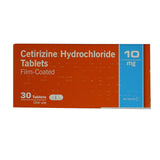
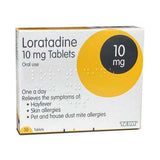
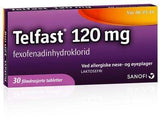
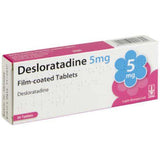

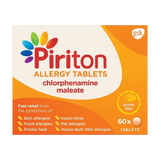
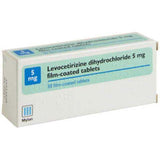
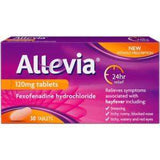
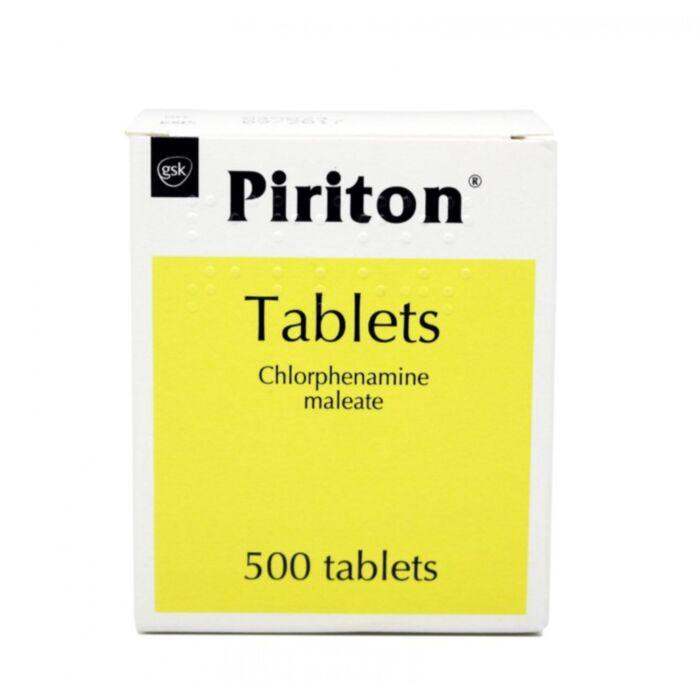

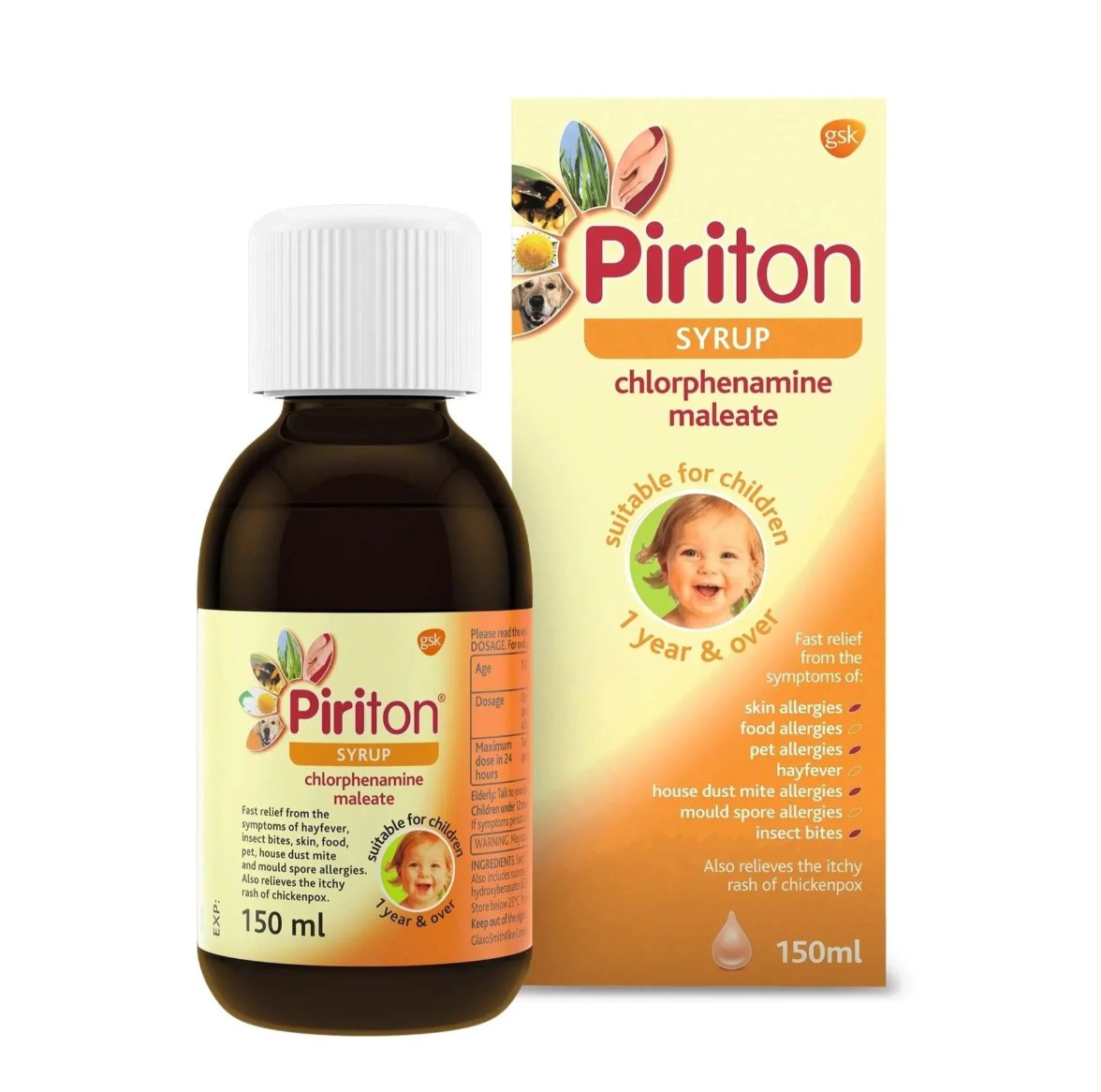



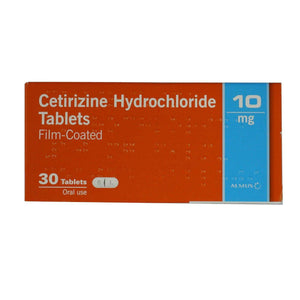
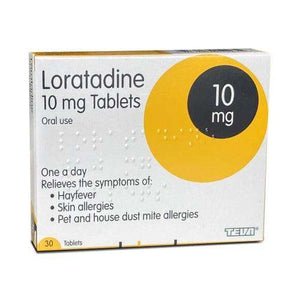
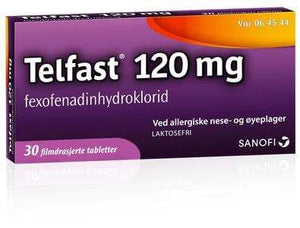
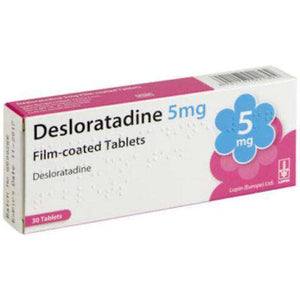

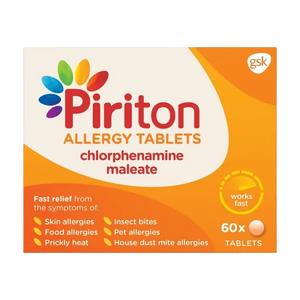
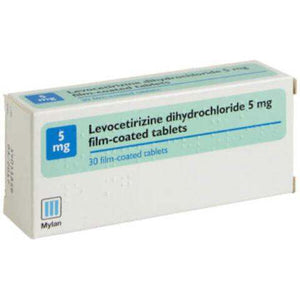
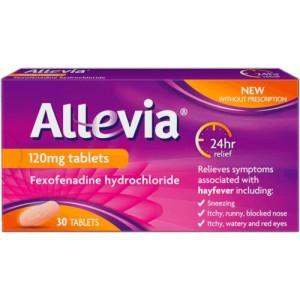
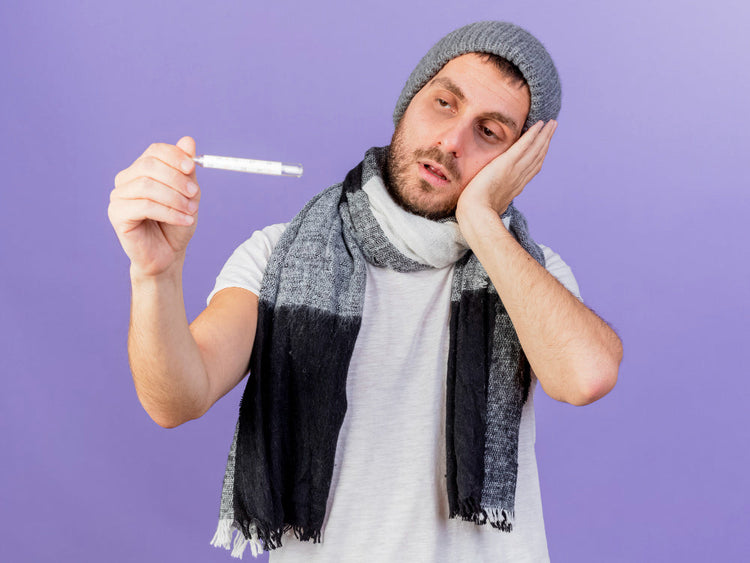
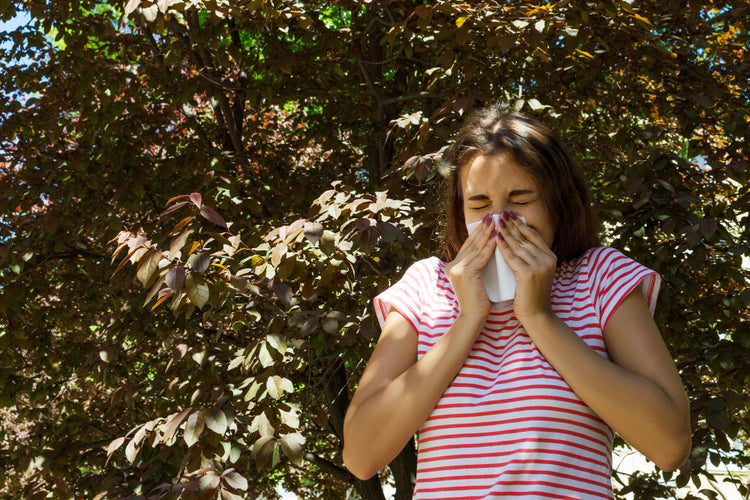
 Rated Excellent by 26,523+ Reviews
Rated Excellent by 26,523+ Reviews